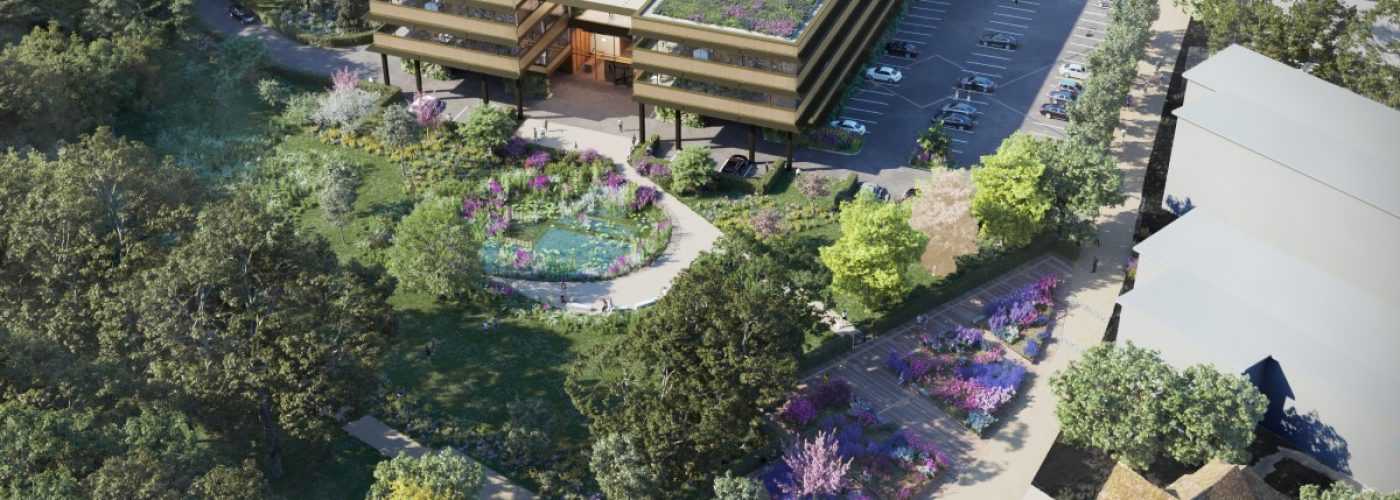The Oxford Science Park has secured planning permission for a new 80,000 sq ft best-in-class laboratory and office building, unlocking the next major phase of growth at the Park.
The approved development will see the construction of a state-of-the-art four-storey building offering high-specification laboratory and office space tailored to the needs of cutting-edge science and technology companies.
Located at the eastern edge of The Oxford Science Park, the site is near the proposed new Cowley Branch Line, with a new station scheduled to open in early 2030, bringing direct links to central Oxford and London.
Yong Shen, Director at The Oxford Science Park, said:
“This is fantastic news for the Oxfordshire ecosystem and for the companies shaping the future of science and technology. This development allows us to offer more world-class facilities in an established setting that promotes collaboration, sustainability and discovery, further cementing The Oxford Science Park’s reputation as a leading destination for science and technology companies. My thanks go to everyone who worked on the planning application.”
Designed with sustainability and community integration in mind, the development includes a 5.86% biodiversity net gain, extensive landscaping, improvements to the adjacent wildlife site, and enhanced cycle and pedestrian connectivity.
Alongside 168 car parking spaces (25% with EV charging) and 104 bicycle spaces, the building itself will feature upgraded façades with anodised aluminium, high energy efficiency standards, and rooftop photovoltaic panels.
The development will also deliver significant heritage enhancements. These include a public space showcasing archaeological discoveries and contributing to the setting of the nearby Grade II listed Minchery Priory.
The unanimous decision by Oxford City Council follows extensive public engagement and marks another milestone in the park’s growth, following the unanimous approval of the 450,000 sq ft Daubeny Project in 2023. The expansion ensures Oxford remains competitive against global science hubs whilst enabling local communities to benefit from investment and employment.
Building, Design & Construction Magazine | The Choice of Industry Professionals





